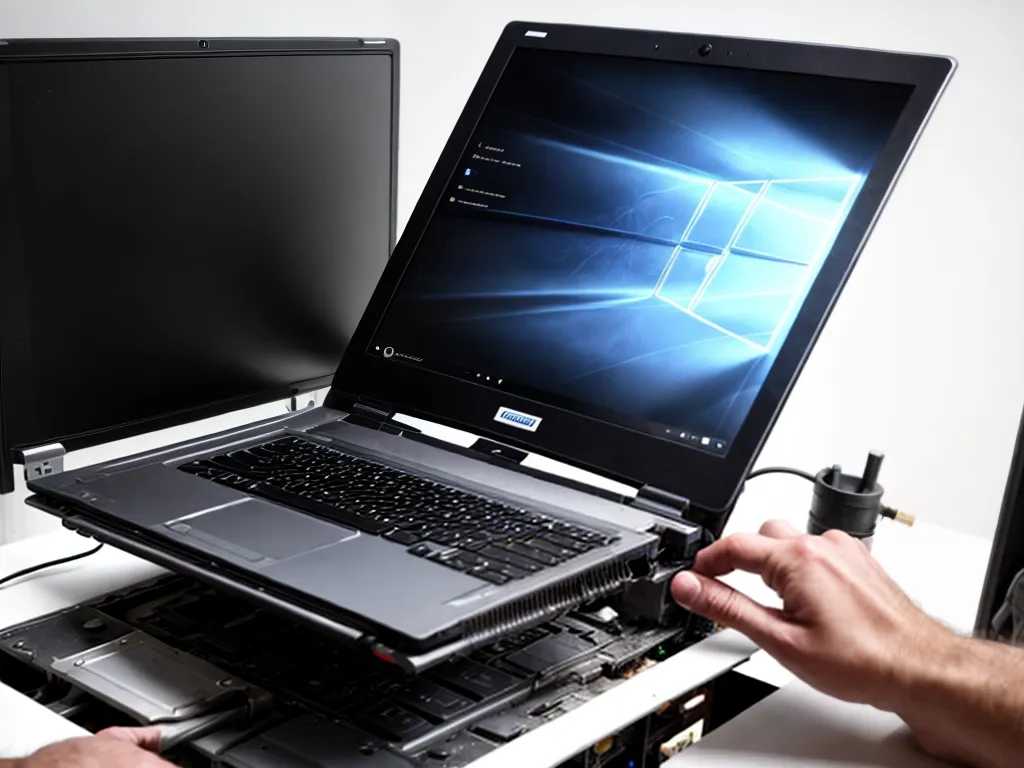
Overheating is a common issue faced by laptop users. An overheating laptop can lead to performance problems, system crashes, and hardware damage if left unchecked. Here is a comprehensive troubleshooting guide to help diagnose and fix overheating issues on your laptop.
Symptoms of Laptop Overheating
How do you know if your laptop is overheating? Here are some common symptoms:
- The laptop feels very hot, especially on the bottom surface and near the vents
- Fans are constantly spinning fast and loud
- Laptop runs slower than usual
- Programs freeze or crash unexpectedly
- Laptop randomly shuts down on its own
- Warning messages about high temperature or overheating
If you notice any of these symptoms, it likely indicates an overheating problem with your laptop.
Potential Causes of Laptop Overheating
There can be several reasons why a laptop overheats. Here are some of the most common causes:
Dust Buildup
Dust accumulation inside the laptop can clog up fans and heat sinks. This prevents effective heat dissipation. Regular cleaning is essential to remove dust buildup.
Blocked Air Vents
Using the laptop on soft surfaces like a bed or sofa can block the air vents underneath. Keep vents unobstructed for air circulation.
Resource-Intensive Apps
Running demanding apps like games, video editing software results in overheating. Use laptop cooling pads for intensive tasks.
Faulty Hardware
Issues with the cooling fan, dried up thermal paste, or faulty temperature sensors can prevent heat dissipation. This may require repair by a technician.
Troubleshooting Overheating Laptop
Follow these troubleshooting steps to identify and fix overheating issues:
1. Update Software, Drivers, and BIOS
Install the latest OS updates, GPU drivers, and BIOS version. Updates often include fixes for overheating laptops.
2. Check for Blocked Air Vents
Inspect bottom vents and side vents for blockages. Remove any objects obstructing vent holes.
3. Clean Dust Buildup
Open up the access panels to carefully clean fans, heat sinks, and vents using compressed air.
4. Elevate Laptop and Use Cooling Pad
Place laptop on hard, flat surface. Use a laptop cooling pad to allow bottom vents to dissipate heat.
5. Disable Unnecessary Apps
Disable background apps and visual effects in settings. These can result in overheating.
6. Lower CPU Power Settings
Set the CPU max processor state to 99% or 95% to reduce CPU workload and heat generation.
7. Replace Thermal Paste
If overheating persists, replace dried up thermal paste between CPU and heatsink with fresh paste.
8. Test Hardware Components
Use hardware diagnostics to test for faulty cooling fans, temperature sensors or heat sinks. Replace if needed.
Preventing Laptop Overheating
Here are some tips to keep your laptop running cool:
- Clean fans and vents regularly using compressed air
- Use laptop on hard flat surface, avoid using on soft surfaces
- Enable auto fan speed control in BIOS
- Avoid resource-intensive tasks for long duration
- Shut down background apps when not needed
- Maintain room temperature between 20-25°C for ideal working conditions
Following proper maintenance and usage habits will go a long way in preventing overheating issues on your laptop.
I hope this detailed troubleshooting guide helps you diagnose and resolve overheating problems with your laptop. Let me know if the solutions work or if you need any other help!












